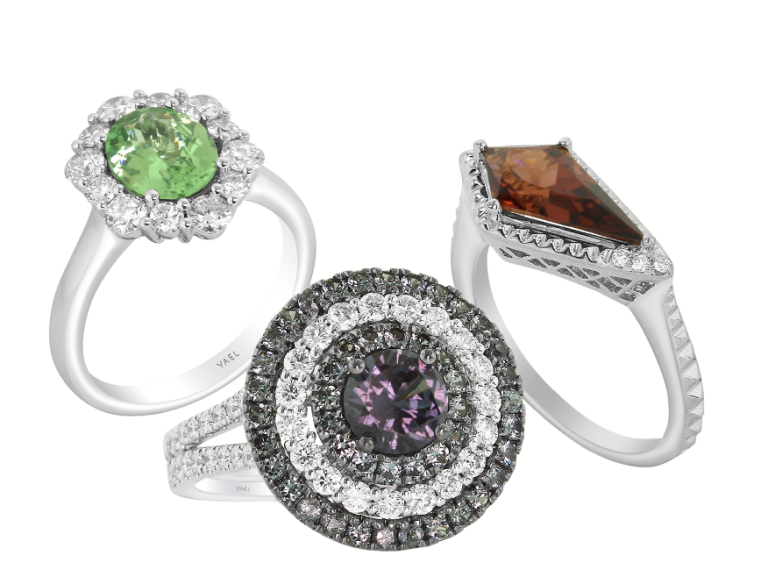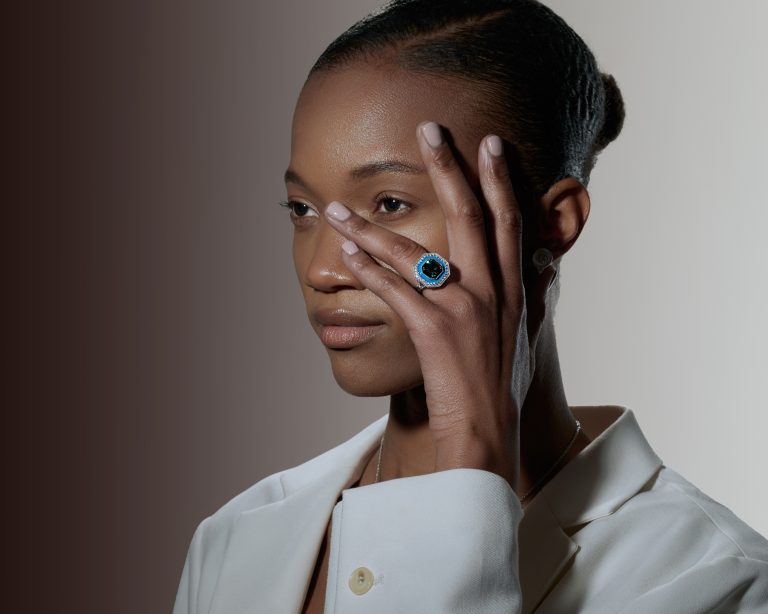Amethystos in Greek, Amethyst is the birthstone of the month of February. Funnily enough, it means “not intoxicated,” reflecting the ancient legend claiming Dionysus, the god of wine, created the stone to protect mortals from drunkenness. This myth persisted through the ages, with Medieval Europeans believing the gem could ward off deceit and enhance performance in battle.
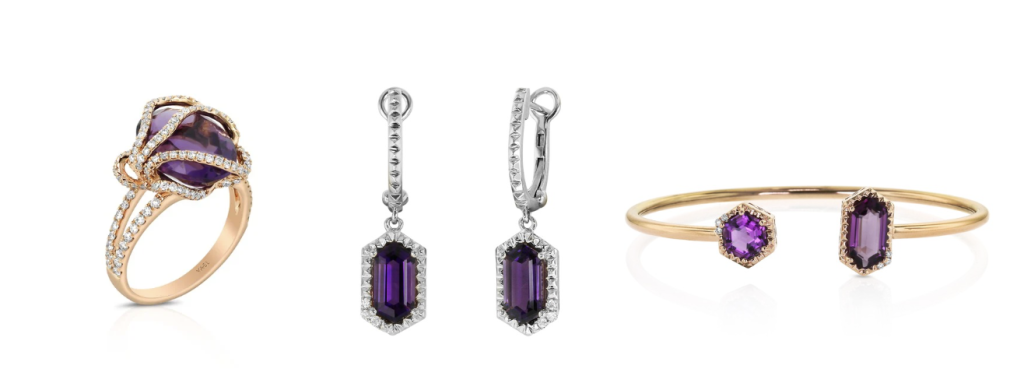
While amethyst is best known for its signature purple color, its spectrum ranges from soft lilacs to rich violets. Amethyst’s shades are influenced by trace amounts of iron and exposure to natural radiation during its formation. The most coveted amethysts, particularly those from Brazil and Zambia, exhibit deep, vibrant color without becoming overly dark, making them highly valuable in jewelry. Unlike many other gemstones that form as standalone crystals, amethyst grows within geodes – hollow volcanic rocks lined with sparkling quartz formations. These breathtaking natural structures can range in size from small hand-held specimens to massive pieces large enough for a person to stand inside. When split open, the inner chambers reveal clusters of amethyst crystals, each uniquely shaped by nature. These features make amethyst not only a prized gemstone for jewelry but also a popular collector’s item and decorative piece, bringing both beauty and positive energy into homes and sacred spaces.
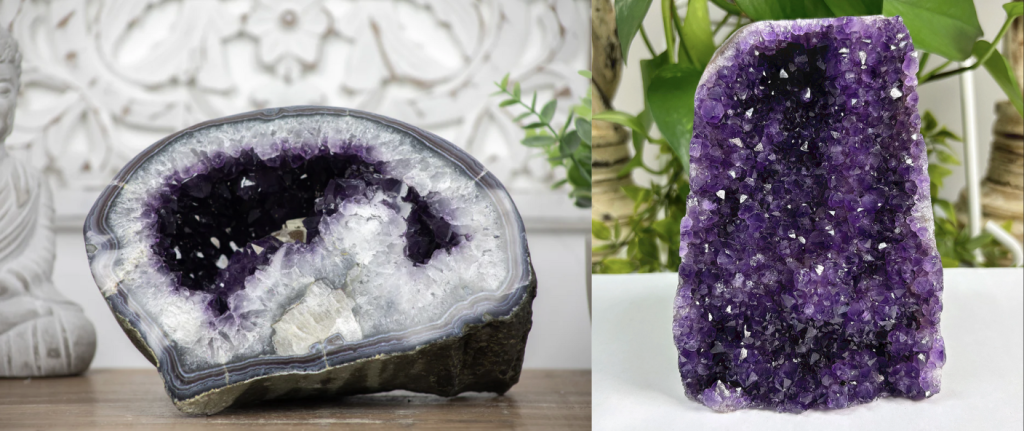
Egyptian pharaohs wore amethyst amulets, believing the stone provided protection and spiritual insight. In ancient Rome, emperors incorporated amethyst into their signet rings, viewing it as a symbol of power and authority. The Greeks and Romans also carved amethyst into intaglios and cameos, using it in elaborate jewelry and ceremonial artifacts.
In Christianity, amethyst was revered for its connection to purity and humility. Bishops traditionally wore amethyst rings, signifying their spiritual devotion and protection against temptation. The gemstone was even mentioned in the Bible as one of the twelve foundation stones of the Holy City in the Book of Revelation.
During the Renaissance, European royalty, including Catherine the Great of Russia and members of the British monarchy, further elevated amethyst’s status by incorporating it into elaborate crown jewels and regal adornments. The gemstone remained a symbol of sovereignty and prestige, often featured in tiaras, brooches, and statement necklaces worn by not only the crown, but also aristocrats.
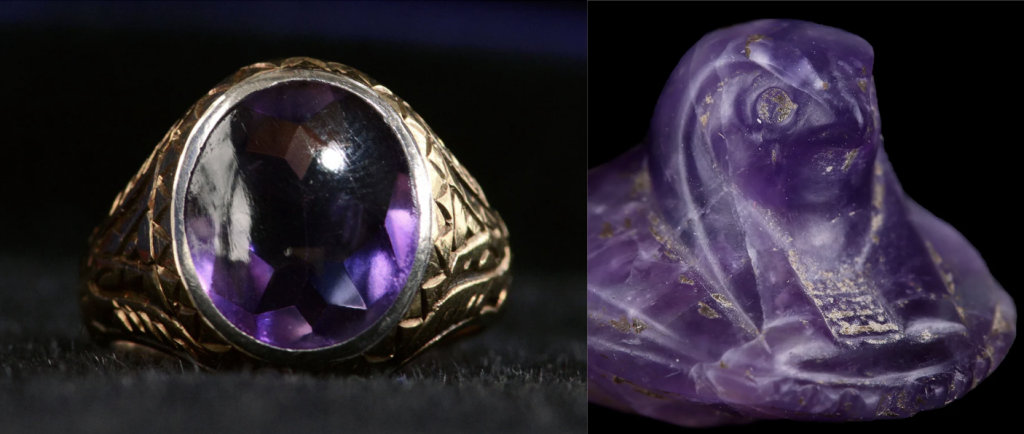
In modern days, even though amethyst lost part of the magic it held before, celebrities like Kim Kardashian and Princess Diana made sure to appreciate the stone in all its glory. Kardashian honored the stone’s legacy by pairing a white gown with the Attallah Cross pendant – an antique amethyst piece famously worn by Princess Diana at a 1987 charity gala. Acquired by Kardashian at a Sotheby’s auction in 2023, the pendant was originally owned by Naim Attallah, former chief executive of Asprey & Garrard, who often lent it to Diana. She notably wore it with a string of pearls and a purple velvet Catherine Walker gown at the 1987 Birthright charity gala.
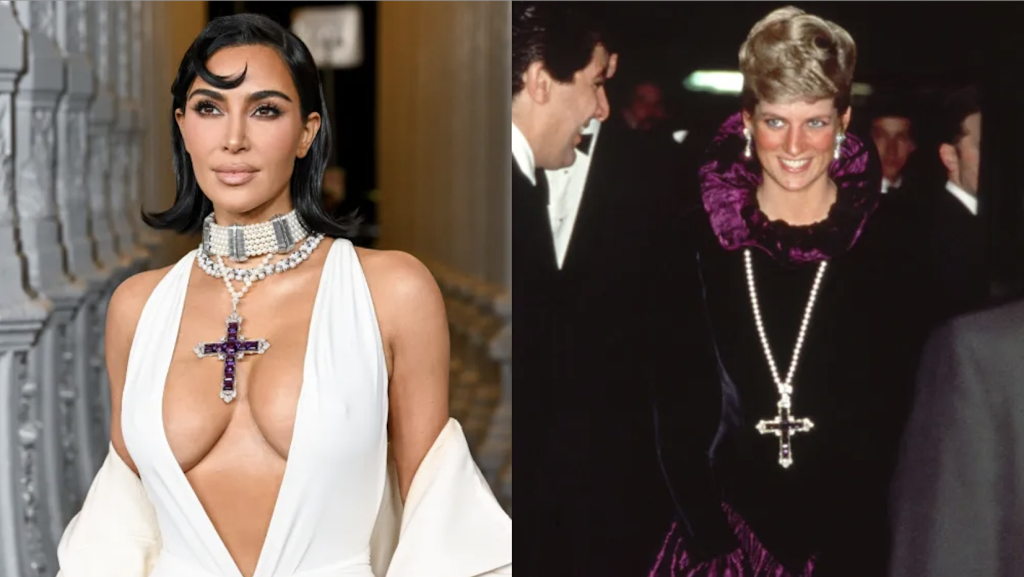
From Dionysus’ mythical goblets to modern meditation practices, amethyst’s legacy is as multifaceted as amethyst itself. Whether worn for its beauty or symbolic depth, this February gemstone continues to inspire across the ages.






